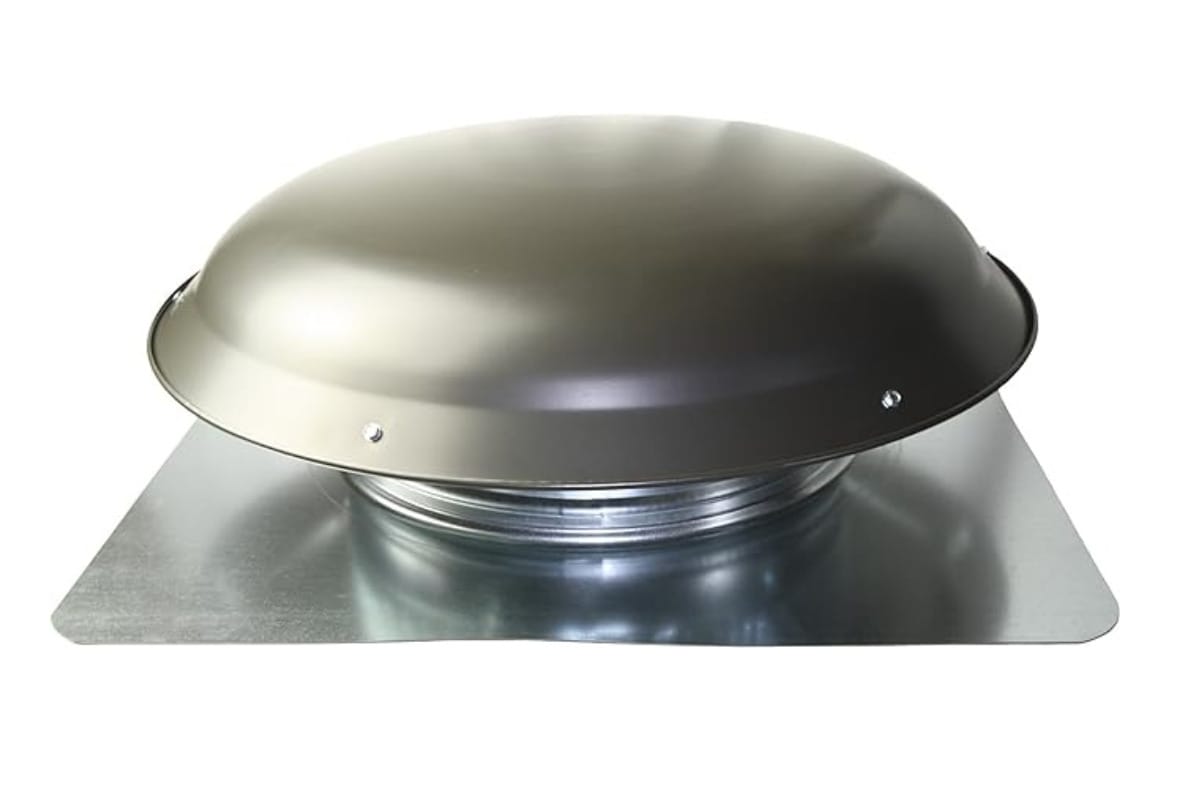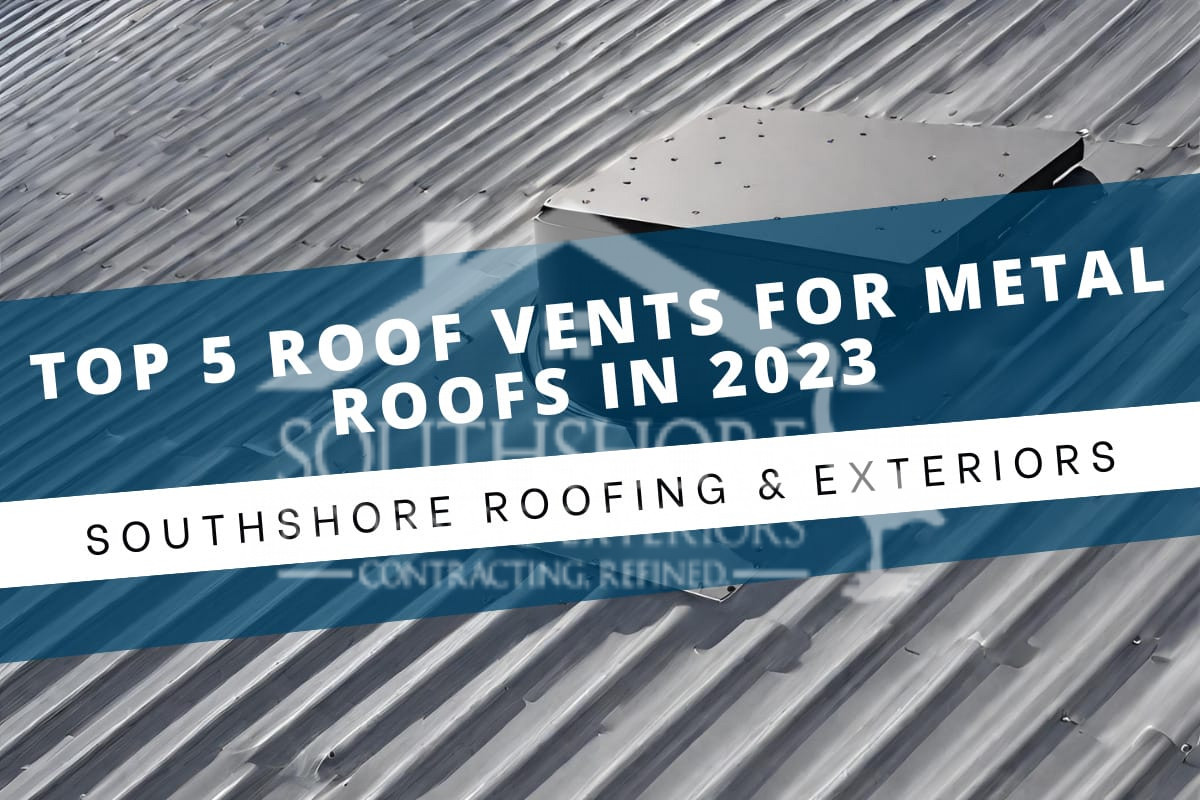Ever wondered about metal roofs and why picking the right one in 2023 matters? Roof vents are crucial for keeping your metal roof in good shape.
Just like we need a cool breeze on a hot day, your roof needs a way to cool down when it becomes overheated. That’s where roof vents come in. They’re like little windows for your roof, letting out hot air and bringing in cool air, promoting sufficient ventilation.
With that being said, let’s check out some of the best roof vents for metal roofs that you can use in your home. With the many developments in the industry, it’s important to be up-to-date and know the best options available. Keep in mind it’s not only about the newest styles, it’s about finding what works well for your metal roof.
The Top 5 Roof Vents For Metal Roofs
Ready to make your metal roof more efficient? Here are the top five roof vents for metal roofs in 2023.
#1. Broan-NuTone® RVK1A Roof Vent
First on our list is the Broan-NuTone RVK1A. It works with 3-inch or 4-inch diameter ventilation ducts and includes an adapter for convenience. This kit has a flat design, a backdraft damper, and a bird screen to stop outside air, birds, or small pests from getting in. It comes with 8 feet of flexible ducting, a metal duct connector, a reducer, and zip ties.
Made of steel with a black finish, the Broan-NuTone RVK1A is simple to install and good for DIY projects.
#2. Airhawk® Wind Turbines
Airhawk® wind turbines use the wind to push out hot attic air, making your home more energy-efficient. They come in sizes ranging from 12 to 14 inches, allowing for a sufficient amount of airflow within your home. With strong features like a bearing system and polypropylene bracing, this long-lasting option is sure to be reliable. People who’ve tried them approve of how well they work and how easy they are to install.
These turbines can be paired with intake vents such as soffits to balance your attic’s ventilation, making your home comfy and helping you save money on your energy bills. The external bracing also keeps the turbines stable and strong, making them a smart and budget-friendly choice for keeping your attic well-ventilated.
#3. Cobra® Exhaust Vent by GAF
The GAF Cobra® Exhaust Vent is a specialized roof ridge vent designed to remove excess heat and moisture from the attic. Available in various sizes and versions, including those compatible with nail guns and hand nailing. They also work great along with ridge cap shingles, as the shingle-over design seamlessly blends into the ridge line, providing an aesthetically pleasing appearance.
The Cobra® Rigid Vent 3™ variant offers 18 square inches of ventilation per linear foot and features an EasyTear™ sizing feature for convenient hand tearing in 3-inch increments, minimizing waste. With different sizes and compatibility with various cap shingles, people love this product for its performance and overall satisfaction.
#4. Maxx Air Power Attic Vent
The Maxx Air Power Attic Vent is like an electric fan made to keep the temperature in your attic just right. It helps control the temperature, protects the insulation, and makes your roofing shingles last longer. You can get it in two versions, with one fitting into the gable side of a home, and one that sits on the roof. They work by letting out hot air and bringing in cooler air from soffit vents along the eaves.
Some models have a thermostat you can adjust, so the fan works by itself based on how hot it is in the attic. People who’ve tried it always talk about how well it works and how easy it is to set up.

#5. Air Vent VenturiVent Plus
The last one, but definitely not the least effective, is the Air Vent VenturiVent Plus; a special kind of ridge vent that’s made to provide great airflow to your attic and keep it well-ventilated. It has a low profile and an external baffle that creates a low-pressure system that pulls air from the attic and makes sure there’s excellent airflow. You can use it with different kinds of roofing systems, like asphalt shingles, wood shakes, and flat tile roofs.
It gives you 18 square inches of ventilation for each linear foot, making sure your attic stays efficiently ventilated. It’s also made strong with a corrosion-resistant aluminum baffle and a weather-resistant polypropylene base, making sure it lasts a long time.
Factors to Consider When Choosing Roof Vents
Before finalizing your choice on which roof vent to get for your metal roof, there are a few factors you may want to consider in order to ensure that you get all the benefits that a roof vent can provide. Choosing a proper roof vent is a very important decision since you want something that fits. Here are key aspects to keep in mind when selecting your roof vent:
Material, Design, Size, and Installation
Consider your roof vent to be a roof accessory that should blend in perfectly. Make sure the size fits your roof, pick a design that you like, and pay attention to the materials the vent is made out of and whether it’s compatible with your roofing material.
Compatibility with Metal Roofs
Metal roofs are different; that is why it is important to make sure the features on your metal roof are complemented by the appropriate roof vent.
The top vents to use with metal roofs include:
Ridge Vents: Ideal for architectural-style metal roofs, they blend in with the roof’s overall aesthetics.
Gable Vents: Effective for metal roofs, but their suitability depends on the complexity of your roof design.
Whirlybird Vents: Metal roofs offer enough space to install whirlybird vents, improving ventilation.
Tips for Assessing Ventilation Needs
Similar to how we adjust water intake on hot days, roofs require different levels of ventilation based on the climate. Evaluate your roof’s ventilation needs by considering the weather in your region and the structural composition of your roof!
Maintenance and Longevity
Good-quality roof vents, when taken care of properly, can help your roof last a lot longer. Roofs with good ventilation can stick around for an extra 15 to 20 years compared to ones without.
To make sure your roof vents last a long time and work well, it’s a good idea to do some regular checks and take care of them. Here’s what you can do:
Regular Checkups: Look at your roof vents often to see if there’s any damage, stuff blocking them, or if they’re not working right.
Clear Away Stuff: Keep the soffit vents free from things like leaves, cobwebs, or insulation so air can flow through.
Quick Fixes: If you notice any problems or damage, fix them right away. This helps stop things from getting worse and keeps your roof vents doing their job.
Call Southshore Roofing & Exteriors for Professional Metal Roof Vent Installation Services
Picking the right roof vent is crucial for the longevity of your metal roof. We hope that the options provided in this blog post help you find a roof vent that suits your roof and style.
If you’ve found one, and want it installed on your home, schedule a consultation with the experienced professionals at Southshore Roofing & Exteriors. With their expertise, these roofers know exactly how to install roof vents and give your home the best ventilation ever.
Getting professional help not only gives you peace of mind but also ensures that your roof vents do their job well, keeping your attic ventilated the way it should be. When you follow these steps, Southshore Roofing & Exteriors can help you with a successful roof vent installation on your metal roof. This not only contributes to a healthy roofing system, but also promotes proper attic ventilation. Call us today at (813) 400-3329 to schedule a free roof inspection!
FAQ
A. Generally speaking, any attic should have at least 1 square foot of ventilation for every 150 square feet of space. To be sure that adequate ventilation is in place, given the particular design and climate of your roof, it is best to consult a roofing specialist.
A. Without proper ventilation, condensation can accumulate, potentially leading to moisture-related issues and decreased energy efficiency.




